Anyone have any thoughts about the relative merits of these two beauties ? Asking for a friend.
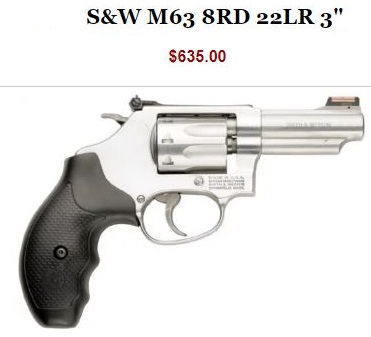
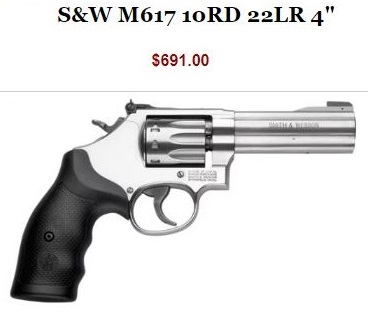
(Pics and prices from Bud’s Guns)

Not just the guns, but all the stuff that goes with them
Anyone have any thoughts about the relative merits of these two beauties ? Asking for a friend.


(Pics and prices from Bud’s Guns)
After WWII came to an end, the Italians needed a locally-made self-loading rifle for their Army, and rather than reinvent the wheel, Beretta simply took the excellent Garand design, modified it to take a removable 20-round magazine (as opposed to the top-loading 8-round en bloc clip of the Garand), gave it a select-fire (full auto) switch, and called it the Beretta BM59. The BM59 was Italy’s battle rifle until 1986, when it was replaced with a poodleshooter-type “assault rifle”, the AR-70 in 5.56mm NATO.
Shortly afterwards, the semi-auto-only civilian version (BM62) was released, with a 19” barrel, and would still be an excellent choice as a citizen’s battle rifle.
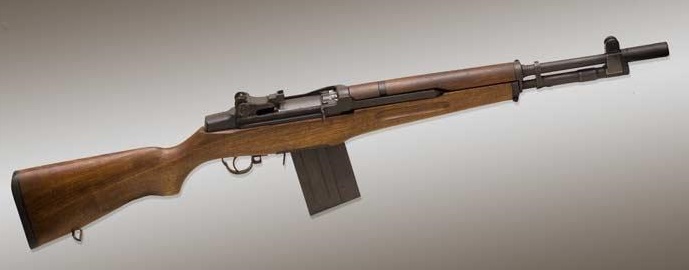
Here’s a close-up of the action:
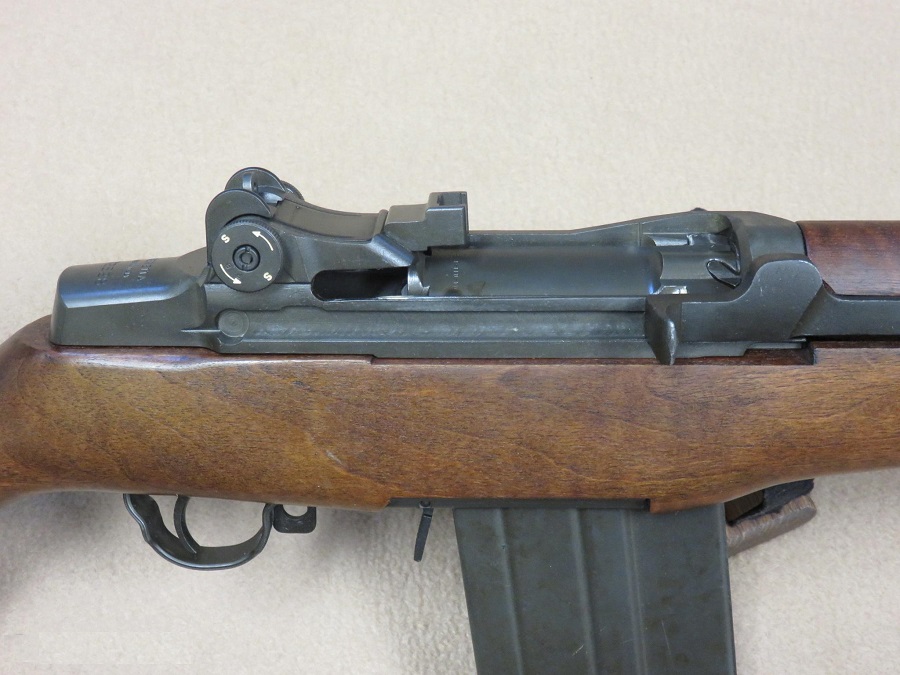
Unfortunately, not many of these beautiful rifles were made, so their prices are typically in the nosebleed range, generally well over $2,500. As with so many rifles of the post-WWII era, it’s just a case of there being more buyers than rifles, so if you find one and really want it, you just have to grin and bear it grimace and sacrifice the kids’ college fund.
Speaking personally, I would rather have one of these than an M14 of the same era—in fact, I would rather have one of these than an M1 Garand, come to think of it. The design is robust and reliable, the caliber excellent (and recoil more manageable than that of the .30-06), and the mag capacity quite acceptable.
From Reader Brad_In_IL comes this excellent rant / exposition:
Kim,
I’m certain that you recall my pistol-caliber carbine dilemma from a few months ago.Well, I thought about all the comments, tightened my belt, increased my budget and purchased the Ruger PC-9 carbine. It’s a fun little rifle, I can shoot it reasonably well and it shares magazines with Ruger’s SR9 series pistols. For your Readers who are Fanbois of Glock 17/19: the carbine ships with interchangeable magazine well inserts allowing it to alternatively run Glock double-stack magazines. Changing to the Glock mag insert takes but a few minutes.
And: Ruger also made the bolt face removable. In the future, if they want to produce variants in .40 S&W or say .45ACP, new bolt face, new barrel, additional mag well inserts, new recoil spring in the blowback system, and VOILA !!! New Rifle !!! Can you tell I’m sold on the concept? Thought so. And how does it shoot? Off-hand at 25 yards, if I do my part reasonably well, it patterns to minute-of-fist with junky “range grade” practice ammo.Here in IL, the inmates are most decidedly running the asylum. As the progressive political winds of doom grow stronger and the political clouds of doom darken to the point of sack-cloth (re: miserable rich-boi fat-fuck toilet-yanking, property tax avoiding, never-worked-a-day-in-his-life JB Pritzker), I decided the time for a carry piece as a companion to the Ruger rifle was to be the order of the day. Remember from above I mentioned about the carbine sharing magazines? I contacted a buddy of mine with an FFL and procured Ruger’s SR9c compact, giving me…
…wait for it…
[drum roll]
a Gratuitous Gun PAIR !!!
So today I give you the modern version of the paired carbine & pistol, sharing not only ammo, but also sharing magazines. Think of it as the modern incarnation of the Old West cowhand who carried a lever-rifle and revolver chambered for the same ammo.
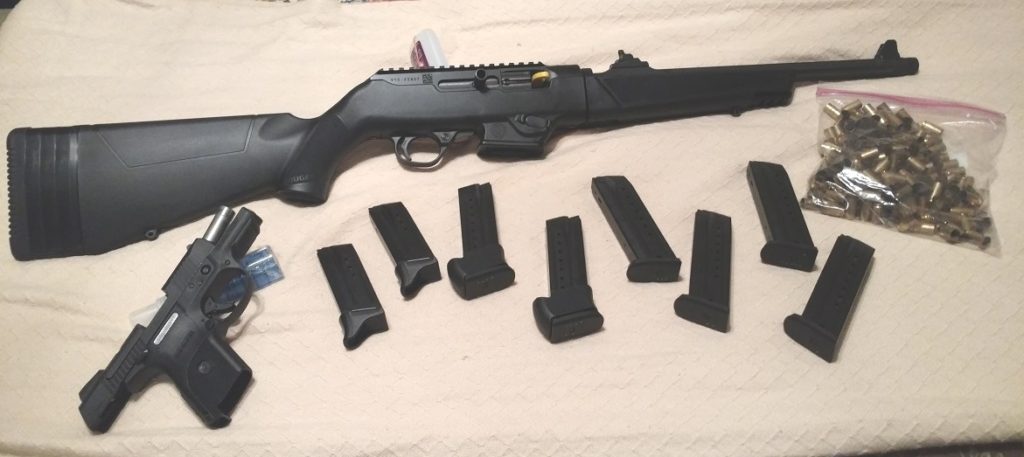
Also:
A few days ago you put up a post about being angry, and that we’d get more of Classic Kim. Angry? Am I angry with how IL is quickly degrading to be almost Kommiefornia? You bet your pasty-white conservative South African ass I’m angry. The Dem-progs here in ILL-Annoy are driving a once-good state, The Land of Lincoln, down the shit-hole. Those feckless moronic mouth-breathing pension-hoarding troglodytes can suck my gunsmoke all day long, and double on Sunday.
Now… time for me to get BUSY. I’ve got two stripped AR lower receivers sitting on the shelf doing me no good. Time to begin my first AR build, because AR rifles cause the Progs here and everywhere to get a crippling case of the vapors, and because a hearty FUCK YOU to the dem-prog hoplophobes in Springfield, Cook County, Deerfield, Highland Park, Aurora and elsewhere. Buggering sods.
Gah. I need a drink. Now, where did I leave my heirloom rye whiskey?
Now that, my friends, is how to deal with living in a GFW location, i.e. which is not part of the United States — other than leaving it, which I’m constantly nagging Brad to do. And that, too, is a fine rant. (The “miserable rich-boi fat-fuck toilet-yanking, property tax avoiding, never-worked-a-day-in-his-life” appellation is worth the price of admission alone.)
And allow me to be the first to congratulate Brad on his gunny activities. That matched pair is a joy to behold.
Final thought: Is it my imagination, or are Ruger products starting to become more-imaginatively (i.e. better) designed?
Well that doesn’t quite fit The Narrative, does it?
A man with a concealed-carry license was commended for coming to the aid of Cicero police who were engaged in a shootout with a man who shot and wounded an officer near the Stevenson Expressway Thursday, authorities said.
Cicero Police Officer Luis Duarte, 31, was shot four times during the encounter near the 4200 block of South Cicero Avenue during the evening rush hour, but it might have been worse if the armed citizen hadn’t stepped in, officials said.
“We were lucky enough to have a citizen on the street there who’s a concealed-carry holder, and he also engaged in gunfire,” Cicero Police Supt. Jerry Chlada Jr. said outside Mount Sinai Hospital, where Duarte was undergoing surgery Thursday night.
And in Chicago, even. No cries yet about “vigilante justice” from The Usual Suspects, but no doubt they’ll be coming soon.
Reader Brad sent me this link about bird-hunting in Britishland, with the result that I immediately emailed Mr. Free Market and told him to book me a spot in his hunting party for next year. I don’t care where the shooting takes place; I just want to be there. In fact, as I told Mr. FM, I’ll even schedule Kim’s European Vacation 2019 around those dates.
Here’s Dave Carrie on the topic.
Reader Brad is a total bastard.
In an email from Reader Ranger:
“You mentioned your ‘modified’ Mil-Spec Springfield 1911A1. Are you referring to the stock changes Springfield makes, such as the lowered and flared ejection port, etc or did you have aftermarket work done? It does look like you have custom grips.
“BTW, I find Springfield 1911A1’s great unless you’re willing to pay nose bleed prices for a Les Bauer or equivalent. I’ve used the Springfield lifetime warranty twice with my 1911A1’s (visualize the low brow pickup truck bumper sticker of Calvin but instead of some NASCAR idiot think Kimber). Springfield’s don’t have the ridiculous firing pin safeties and instead uses a stronger firing pin spring coupled with a lighter titanium firing pin.
“Also it looks like you’re using Wilson Combat magazines. Kudo’s on that!
IMHO, from the side view, you have the GI sights and I would suggest at some point swapping them out for Novak style tritium night sights. Just saying more than 50% of shooting occur after dark, and as I get older a bright green front sight dot is comforting.”
Here are the pre- and post-modified pics:
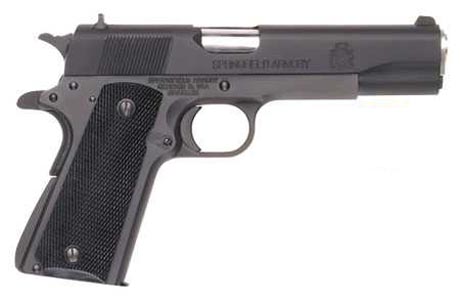
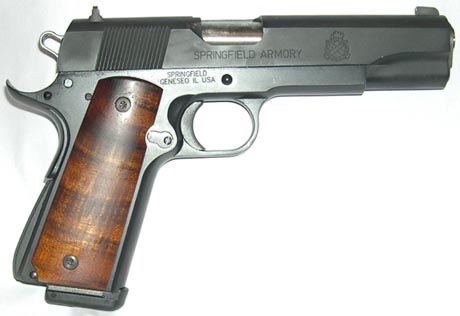
My modifications to the stock Springfield G.I. 1911 were as follows:
…and that’s about it. I use Chip McCormick PowerMags exclusively, not the Wilson Combat type because the tolerances of the Wilson are a little tight for my Springfield’s mag well.
I’ve toyed with putting Novak sights (or similar) on the thing, but frankly, the gunsmithing cost is prohibitive. I’d rather just keep anointing the little white dots on the existing sights with florescent paint as it wears off.
When I bought my 1911, Springfield hadn’t yet made the “Loaded” model, which is basically what mine is (except for the sights).
Other considerations:
I don’t care for the rough feel of stippled or ribbed grips and frontstraps because after I’ve shot more than a hundred rounds, my skin gets chafed and irritated. My hands don’t perspire — never have — so smooth grips never feel slippery in my hands when I’m shooting. I also don’t care for the “extruded” grip safeties that seem to be all the rage nowadays because if you grip the gun firmly — as God and John Moses Browning decreed — the grip safety will always disengage. The extrusion, when practicing quick draws, can catch on the web of my thumb and forefinger and once again, that gets irritating after a few hundred rounds’ practice.
The G.I.’s issue trigger is outstanding — it wasn’t at first, but after a few hundred rounds it settled into its current state of perfection. Nobody, after firing my 1911, has ever had anything other than praise for the trigger, so I feel no need to change it.
There it is: Kim’s 1911. My idea of a perfect self-defense pistol.